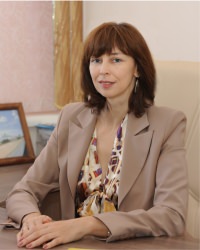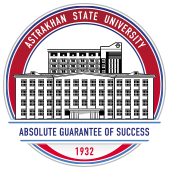Educational Process: Introduction of New Technologies
 02.12.2014
02.12.2014
Professor Lyudmila Baeva, Dean of ASU’s Department of Social Communications, has told us about arrangement of academic studies in Philosophy within united groups of students.
“The first part of the current educational experiment, which aims both to enhance the quality of our academic process by activating our students’ work and to introduce team, project, interactive, and creative techniques of students-related activities. This experiment was launched in September 2014.
 The course of our lectures and seminars in Philosophy has been distributed as follows: our students submerged into this discipline deeply every Saturday during 4.5 hours. Their work was coordinated by a team of professors – four lecturers and four assistants, who were always in the lecture hall. Each lecture was divided into times; the rhythm of each time was 10 to 15 minutes. It was crucial to make each lecture bright, as Philosophy is personality-based knowledge; it goes from a heart to a heart. The aesthetic, visual aspect has helped our students master the material more productively and made the course more interesting. The percentage of the interactive component has soared: instead of usual 20 or 30 %, we set ourselves the task to achieve 100 % of interactivity at our lectures and 80 % at our seminars.
The course of our lectures and seminars in Philosophy has been distributed as follows: our students submerged into this discipline deeply every Saturday during 4.5 hours. Their work was coordinated by a team of professors – four lecturers and four assistants, who were always in the lecture hall. Each lecture was divided into times; the rhythm of each time was 10 to 15 minutes. It was crucial to make each lecture bright, as Philosophy is personality-based knowledge; it goes from a heart to a heart. The aesthetic, visual aspect has helped our students master the material more productively and made the course more interesting. The percentage of the interactive component has soared: instead of usual 20 or 30 %, we set ourselves the task to achieve 100 % of interactivity at our lectures and 80 % at our seminars.
Let me give you sketch noting as an example. This technology helps accumulate the knowledge obtained at a lecture, create bright visual images, identify unique ideas, and involve concealed passive reserves. We also applied the method of “active second microphone”, thanks to which all the interested students could be heard by everyone. There was a mini survey after each lecture block; the young people voted with consoles. Attention, vivid interest, and the necessary level of activity were supported with intellectual and physical warm-ups familiar even for secondary school children.
The declared 100% level of interactivity has been achieved by meeting the teamwork principle. But to arrange such work among students, it’s necessary to demonstrate its features first. That’s why each teamwork class was delivered by two faculty staff members (an associate professor and an assistant), who showed how to interact and learn each other’s experience. The name of this principle is supervision.
Cinquain versification and a defense of creative photo projects, analyses of philosophical aphorisms and texts, responses by using materials of another person’s presentation, and chain oral tests – all these interactive methods awake creative thinking, help systemize knowledge, provide experience in group planning, and develop students’ skills and analyze and tackle real issues.
Final outcomes of this experiment will not reveal themselves at once, but I’d sum up its preliminary results. The first module is over, and all our students have passed their exams. We’re aware that results may be different at other stages, as the academic process depends on how often students attend classes and how actively they work in a lecture hall.
This large-scale experiment has already provided a lot of benefits for both our professors and students. As all the participants of the projects say, now it’d be uneasy now to return to standard forms of delivering lectures and seminars”.
Interviewed by N.I. Kirillova (the Innovative Laboratory of Information Linguistics of ASU)


